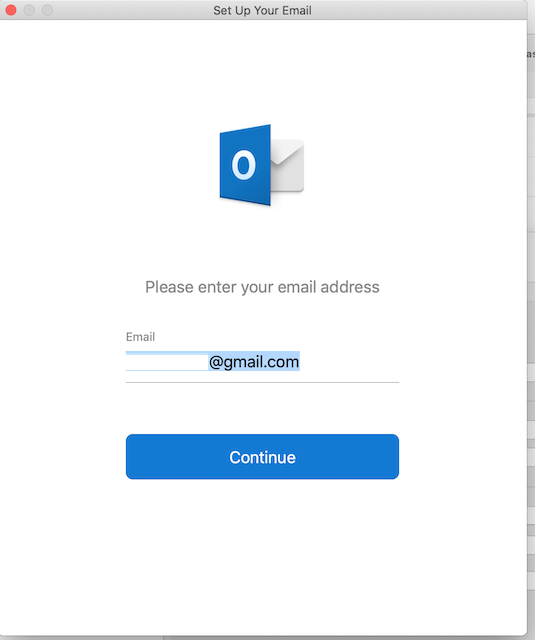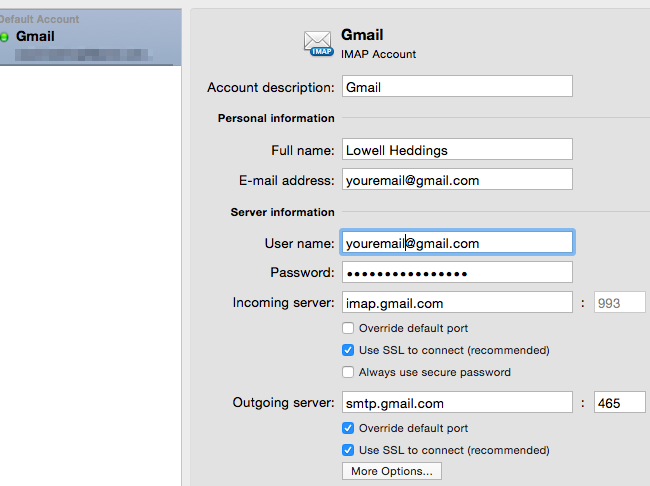- Here are five of the best free email clients to try on your Mac. MS Office Google Drive Home Theater TV & Displays. Integrates with Gmail, iCloud, Microsoft.
- In Mail, choose Mail Add Account, select an account type, then enter your account information. Make sure the Mail checkbox is selected for the account. If you’re using an account on your Mac with other apps, such as Contacts or Messages, you can also use that account with Mail.
Create a new document and edit it with others at the same time — from your computer, phone or tablet. Free with a Google account.
Mail User Guide
Use the Mail app to send, receive, and manage email for all of your email accounts in one location. Simply add the accounts—such as iCloud, Exchange, Google, school, work, or other—you want to use in Mail.
Add an email account


The first time you open the Mail app on your Mac, it may prompt you to add an account. Select an account type—if you don’t see your type, select Other Mail Account—then enter your account information.
If you already added an email account, you can still add more. In Mail, choose Mail > Add Account, select an account type, then enter your account information. Make sure the Mail checkbox is selected for the account.
If you’re using an account on your Mac with other apps, such as Contacts or Messages, you can also use that account with Mail. In Mail, choose Mail > Accounts to open Internet Accounts preferences, select the account on the left, then select the Mail checkbox on the right.
Temporarily stop using an email account


In the Mail app on your Mac, choose Mail > Accounts.
Select the account, then deselect the Mail checkbox.
Now the account’s messages are not shown in Mail.
Gmail For Mac Mail
To use the account again with Mail, select the Mail checkbox; the account’s messages are shown again (they don’t need to be downloaded from the server again).
Remove an email account
When you remove an email account from Mail, the account’s messages are deleted and no longer available on your Mac. Copies of messages remain on the account’s mail server and are still available (from webmail, for example).
Important: If you’re unsure whether messages you want to keep are still on the mail server, move or copy them to a mailbox stored on your Mac (the mailbox appears in the On My Mac section in the Mail sidebar) before you delete the account in Mail.
In the Mail app on your Mac, choose Mail > Preferences, then click Accounts.
Select an account, then click the Remove button .
Note: If the account is used by other apps on your Mac, you’re asked to remove the account in Internet Accounts System Preferences. Click the button to open Internet Accounts, then deselect the Mail checkbox for the account. To stop using the account in all apps, make sure the account is selected, then click the Remove button .
If your Mac is connected to the Internet but suddenly starts asking for your password, you should generally try again later, and if necessary work with your email provider to resolve. If you're using Apple's iCloud Mail, learn how to resolve issues with iCloud Mail.
Why is Mail asking for your password?
Mail asks for your password when it is connecting to your email provider, but can't connect to your email account because your email provider isn't accepting your email password.
Your email provider may reject your password for several reasons, including:
- You're not using your current email password. If you updated the password on another device, make sure that you're using the same password on your Mac.
- Your email provider needs you to update or reset your password for security reasons. For example, if you're using Google’s two-step verification, your Gmail account in Mail requires the appropriate app-specific password.
- Your email provider deactivated or suspended your account. Contact your email provider for help.
Check your password in Internet Accounts preferences
Depending on the type of email account you're using, you might be able to correct the password as follows:
- Quit Mail. If it doesn't quit, you can force it to quit.
- Choose Apple menu > System Preferences, then click Internet Accounts.
- Select your mail account in the sidebar.
- If you see a password field for your account, delete the password and type the correct password.
- Close System Preferences, then open Mail and try using your account again.
If Mail still asks for your password, the password is probably incorrect. Your email provider can help you verify your email settings and make sure that you're using the correct password.
Test using webmail
Gmail For Mac Os
Many email providers offer webmail, which is a way to use email with a web browser such as Safari, instead of with an email app such as Mail. For example, if you're using an iCloud Mail account, you can use iCloud.com to send and receive email.
Because the password that you use with Mail is usually the same password that you use with webmail, try signing in to webmail with that password. If it doesn't work there either, your password is probably incorrect. Your email provider can help you verify your email settings and make sure that you're using the correct password for the Mail app.
Remove your account, then add it back
If no other solutions work, try setting up your email account again. To do that, first remove your email account, then add the account back.
Learn more
Gmail Office For Macbook
- If you're using Apple's iCloud Mail, learn how to resolve issues with iCloud Mail. The password that you use with iCloud Mail is your Apple ID password. Learn what to do if you forgot your Apple ID password or want to change your Apple ID password.
- If you forgot or want to change the email password for a different email service, contact the email provider or request a password reset from their website.